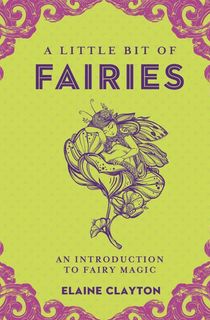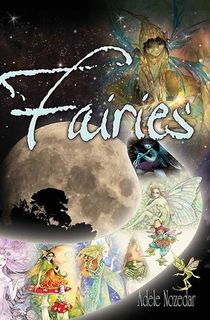The Fae. Faeries. Sidhe. Elves. The Fair Folk. No matter what name you know them by, the Fae are a mainstay of the fantasy genre. You could even say that they’re having a bit of resurgence lately, thanks to authors like Holly Black and Sarah J. Maas. Earlier this year, Heather Fawcett took a different approach in her novel, Emily Wilde’s Encyclopaedia of Faeries.
The first of a duology, the novel introduces us to Emily Wilde, a Cambridge professor and top expert in faerie lore. She travels to a Norwegian island to conduct field research on the Fair Folk that live near a small, isolated town. Her plans are disrupted, however, when an academic rival joins her, and even more so when people begin disappearing from the village—presumably taken by the Fae. Now, Emily and her rival must join forces and unravel the mystery behind what’s happening and why.
Despite the plot, the original purpose of Emily’s trip is to create the ultimate guidebook to the Fae and faerie lore. But if you’re curious about what such an encyclopedia might look like, you need not worry. Several guides like that already exist. Here are a few books to help you learn more about the Fair Folk.

A Little Bit of Fairies
From brownies to dryads, Clayton’s guidebook provides an overview of the different types of faeries found in folklore. In addition to exploring the differences between the various subtypes, she also offers suggestions on how to invite a little faerie magic into your life. Given how fantasy loves exploring the many ways a single Fae can mess up your existence, that latter might not be your cup of tea, but it can be fun to invite some whimsy into your world.

Encyclopedia of Spirits
The argument can be made that faeries, demons, and gods all fall into the same category. Listen to enough podcasts about the weird and mysterious, and you might run into the phrase, “Maybe it’s all just Fae!” Some folklore does make faeries sound like gods. Judika Illes groups these supernatural beings under the simple label of “spirits” and perhaps that approach works best. In this encyclopedia, she covers many types of spirits, as well as explains how to communicate with them and recognize when they manifest. Those interested in the occult might find the latter of interest, but some people might advocate more caution since some of the spirits included in Encyclopedia of Spirits aren’t known to be friendly.

The Origins of Wizards, Witches and Fairies
Fairies, along with wizards and witches, figure prominently in many fantasy novels. Over time, they’ve developed certain recognizable traits. Elves are ethereal and otherworldly. Grizzled wizards wear pointed hats. Witches cast spells with their magic wands. Simon Webb takes what we know about these magical beings via pop culture and explores their origins and how their respective images have changed over time.

The Fairy Bible: The Definite Guide to the World of
Like other modern faerie encyclopedias, Moorey takes the approach of categorizing beings as fairies that other people might consider gods. This may be a controversial approach, but if you take the perspective that “The Fae” has become something of an umbrella term in certain circles, the classification starts to make more sense. In addition to the classic encyclopedic entries, Moorey also covers what kinds of food and drink faeries like, what animals and plants they adore, and what clothes they wear. Redcaps, anyone? And, of course, she covers the most important thing: how to address a faerie without inciting their wrath. Calling them “The Fair Folk” became common practice for a reason, after all.

Encyclopedia of Fairies in World Folklore and Mythology
Pop culture likes to portray faeries as they’re known in European folklore. Our most famous images either lean toward the graceful elves of Middle Earth or the brutal capriciousness of the Fae in Holly Black’s books. But if you look at folklore from around the world—not just Europe—you’ll find that faeries and other affiliated nature spirits figure prominently in other cultures. Readers expecting an academically rigorous text won’t necessarily find it here. Bane likes to mix faeries and deities without warning, as well as those found in traditional folklore versus those who originated more recently via fiction and online accounts.

Fairies
Like many other faerie guidebooks, Nozedar’s work details the many types of Fae found in folklore. What’s interesting, however, is that she also points out what made that type of faerie famous. Was it a fantasy trilogy like J.R.R. Tolkien’s The Lord of the Rings? Or was it an animated film like Peter Pan? Some faerie types even catapulted to fame courtesy of advertising! Who would have thought?

Seeing Fairies
Given the enduring interest in the Fae, it surprises no one that there exist organizations devoted to the topic. If there can be societies focused on ghosts, psychic phenomenon, and aliens, why not faeries? The Fairy Investigation Society was formed in the early 20th century, during which its popularity ebbed and flowed, but could count several well-known figures among its membership such as Walt Disney. It closed in the 1990s but was revived as an online organization in 2013. In the 1950s, Marjorie T. Johnson served as the Society’s secretary. During her tenure, she transcribed many accounts of fairy sightings as told to her by alleged witnesses, in letters sent to the Society, and even stories covered by the media. Those accounts are collected in this volume.

Faery Tale
Unlike the other books included in this list, Signe Pike’s entry is a memoir instead of an encyclopedia about The Fair Folk. But in many ways, it has more in common with The Encyclopaedia of Fairies. Pike chronicles her choice to leave her career and journey through Ireland, Scotland, and England in search of the Fae. She visits mysterious forests, sacred sites, and even local pubs to find people who still believe in these magical beings. It sounds quite like a certain academic curmudgeon, doesn’t it?





